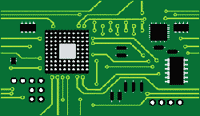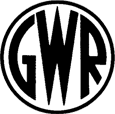CENTRE
The Didcot Railway Center is located in Didcot, Oxfordshire, England, United Kingdom. This is about 60 miles west of London and just south of Oxford. While the town of Didcot was found easily enough the Didcot Railway Centre entrance was a bit more devious about its location. Access to the site is through National Rail's Didcot Parkway Station via an underground passage that leads to several platforms. Step down, walk to the end, climb up the stairs, and you will find the entrance gate and ticket office to this old Great Western Railway site.
Easy enough to accomplish if you arrive by train, if by car, then you'll need to park in one of two large parking lots across from the station entrance. Either Julian's Car Park or Station Road Car Park. Upon arrival, not knowing which was best, Julian's was randomly chosen only to find it nearly full. Foolishly, I drove past the entrance parking meters before getting a ticket, thinking there would be more scattered throughout the lot. Eventually I found a space at the rear then had to walk all the way back to the entrance to pay for parking only to discover all the machines were broken except for the option to pay Julian for parking by cellphone, which I didn't have. So, angered, I walked back to my car then drove around to the Station Road Car Park which had serviceable ticket machines that would accept currency. Not a good start to a Didcot Railway Centre self-guided discovery tour.
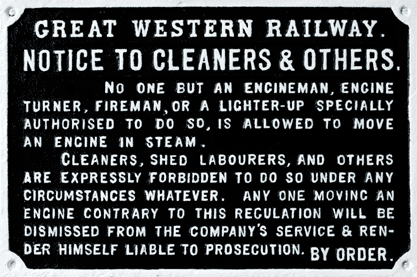
GWR trackage first appeared at Didcot in 1839 which was the obvious maintenance location for locomotives travelling to Oxford. The original broad gauge wood engine shed was replaced by a steel framed half brick four track run-through shed in 1932 which also included a repair shop, sand furnace, turntable, associated office buildings, and a coaling station. This arrangement remained virtually unchanged until closure in 1965.
In 1967 the Great Western Society took over the closed Didcot locomotive depot from British Railways negotiating a lease valid until 2019. Unfortunately, the lease contained a 6 month termination clause that required the society to vacate the site if required. Over time attempts were made by the society to purchase the site, or better its' position within the terms of the lease. National Rail, the child of British Rail, would not sell but advised the lease could continue. As of 2019 the Society now has an extended lease good for another 50 years.
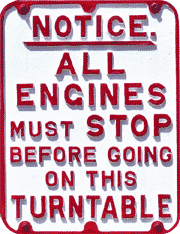
Didcot Railway Centre is entirely surrounded by active railway lines and has no road connection of any kind. Public access is on foot by the pedestrian subway at Didcot Parkway station. Wheelchair access is practically nonexistent as they have to be carried up a flight of concrete steps. Although this contravenes the Disability Discrimination Act, the Great Western Society is unable to improve it, since the site is owned by Network Rail.
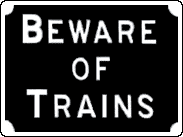
 to determine which day equipment is operating. The museum utilizes a half mile of track called the Main Demonstration Line to operate trains. This track lies along the east edge of their site from a platform opposite the ticket office, to a platform named Oxford Road Station beside the transfer shed (trans-shipment shed) at the north end of the site.
to determine which day equipment is operating. The museum utilizes a half mile of track called the Main Demonstration Line to operate trains. This track lies along the east edge of their site from a platform opposite the ticket office, to a platform named Oxford Road Station beside the transfer shed (trans-shipment shed) at the north end of the site.The following equipment is currently serviceable (September 2019) for operation along the Main Demonstration Line:
- GWR 4-6-0 Ten-Wheeler "Lady of Legend" number 2999;
- GWR 4-6-0 Ten-Wheeler "King Edward II" number 6023;
- GWR 2-6-2 Prairie number 4144 (Severn Valley Railway visitor);
- GWR Steam Railmotor number 93;
- BR 0-6-0 Hunslet Diesel Hydraulic Shunter number DL26;
- BR 0-6-0 Class 08 Diesel Hydraulic Shunter number 604;
- BR 0-6-0 Class 14 Diesel Hydraulic number D9516;
- GWR Diesel Railcar number 22.
 to view their entire list of equipment.
to view their entire list of equipment. Or see the Locomotive Traffic Roster
 to determine which engine is operating on a particular day.
to determine which engine is operating on a particular day.
